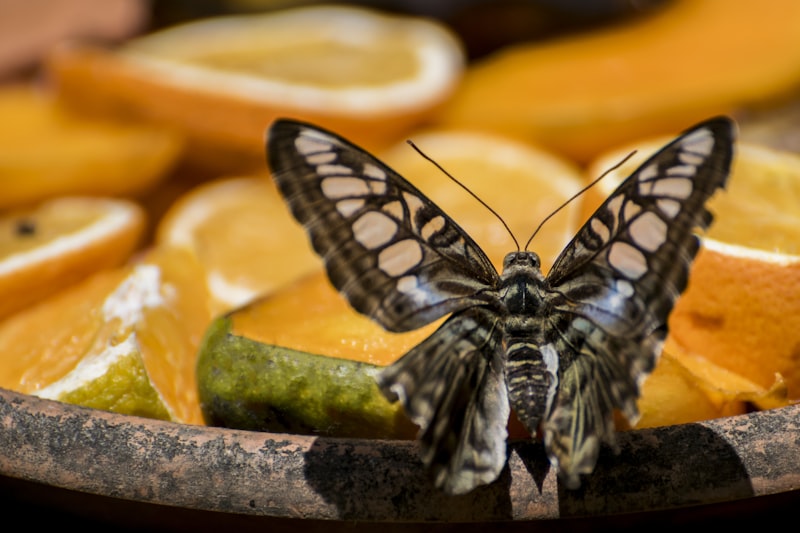Soil invertebrates, ranging from earthworms to nematodes, act as both hosts and consumers in this microbial drama. They create habitats and help aerate the soil, facilitating the movement of air and water that sustains life below ground. In return, microorganisms break down organic residues left by these invertebrates, releasing nutrients that plants absorb for their growth.
The interactions within this ecological framework are not just about survival; they are about thriving in a symbiotic dance where each participant contributes to the health and fertility of the soil. Picture a dance where bacteria are the orchestra, fungi are the choreographers, and soil invertebrates are the dancers — each movement influencing the rhythm and harmony of the ecosystem.
But it’s not all harmony; there are battles and challenges too. Some microorganisms are predators, hunting others for survival, while some invertebrates consume specific bacteria or fungi, shaping their populations and dynamics. This dynamic balance is crucial for maintaining soil health, which directly impacts agricultural productivity and environmental sustainability.
Understanding the microbial ecology of soil invertebrates unveils the hidden world beneath our feet, showing us how these tiny organisms orchestrate life above ground. It’s a world where every interaction, no matter how small, plays a vital role in sustaining life on Earth.
Unveiling the Hidden World: How Soil Invertebrates Shape Microbial Communities
Imagine the soil as a bustling cityscape, with invertebrates like earthworms, nematodes, and mites as its diligent inhabitants. Each species has its niche, influencing the soil environment in unique ways. Earthworms, for instance, burrow through the earth, aerating the soil and creating pathways for water and air to penetrate deep below the surface. Their activities not only improve soil structure but also facilitate the movement of nutrients and organic matter.
Meanwhile, nematodes, microscopic worms, act as predators or prey in the soil food web. Some nematodes consume bacteria, fungi, or other nematodes, directly impacting microbial populations. This predation regulates the abundance and diversity of soil microbes, influencing nutrient cycling and plant health.
Invertebrates like mites further diversify the soil community by feeding on decaying organic matter and fungi. They contribute to nutrient recycling and decomposition processes, releasing essential elements back into the soil for plant uptake. Through their feeding habits, these organisms indirectly support plant growth and ecosystem resilience.
The interactions between soil invertebrates and microbial communities are intricate and dynamic. Their activities shape soil health, fertility, and resilience to environmental stressors. Understanding these relationships is crucial for sustainable agriculture and ecosystem management, as healthy soils underpin food security and biodiversity conservation.
Soil invertebrates act as the architects of the underground world, sculpting microbial communities that drive essential soil processes. Their role in nutrient cycling, soil structure improvement, and organic matter decomposition highlights their significance in maintaining ecosystem balance. As we unveil this hidden world beneath our feet, we gain insights into the interconnected web of life that supports terrestrial ecosystems globally.
The Secret Allies Beneath Our Feet: Soil Invertebrates’ Role in Microbial Ecology
Ever wondered about the bustling world beneath our feet? Soil invertebrates, those tiny creatures we often overlook, play a crucial role in microbial ecology. These underground allies, from earthworms to nematodes, create a dynamic ecosystem where microbes thrive. Their constant burrowing and feeding activities aerate the soil, allowing oxygen and water to penetrate deep into the ground. This not only benefits plant roots but also facilitates the growth of diverse microbial communities.
Invertebrates like ants and beetles act as ecosystem engineers, altering soil structure as they tunnel and move organic matter. Their activities create microhabitats that vary in moisture, temperature, and nutrient availability, influencing the distribution and activity of soil microbes. For instance, fungal networks flourish in the organic debris left behind by decomposing insects, forming intricate relationships with plant roots known as mycorrhizae.
Moreover, soil invertebrates serve as vectors for microbial dispersal. Microbes attach to their bodies, aiding in colonization of new environments and enhancing microbial diversity. This symbiotic relationship between invertebrates and microbes is essential for nutrient cycling and soil fertility. As invertebrates decompose organic matter, they release nutrients that microbes transform into forms accessible to plants.
In a world increasingly focused on above-ground biodiversity, the role of soil invertebrates often goes unnoticed. Yet, their contributions to microbial ecology are profound. By fostering interactions between microbes and plants, they sustain terrestrial ecosystems and support agricultural productivity. Understanding their role allows us to appreciate the complexity of soil life and underscores the importance of conserving soil biodiversity.
So next time you step outside, remember the secret allies beneath your feet. Soil invertebrates may be small, but their impact on microbial communities and ecosystem health is immense. They are the silent architects of fertile soils and thriving landscapes, connecting the intricate web of life from underground to above.
From Tunneling to Transforming: Soil Invertebrates as Drivers of Microbial Diversity
Imagine soil as a vibrant community where earthworms, beetles, and nematodes are the key players. Their activities not only aerate the soil but also create pathways that allow water and nutrients to penetrate deeper layers. This tunneling process acts as nature’s tillage, promoting healthier root growth and enhancing soil structure.
Each invertebrate species contributes uniquely to microbial diversity. Earthworms, for instance, ingest soil and organic matter, enriching it with beneficial microbes through their digestive processes. This enriched soil becomes a fertile ground where microbial communities thrive, breaking down organic matter and releasing essential nutrients for plant uptake.
Beetles and other soil insects also leave their mark by burrowing and feeding on organic debris, which accelerates decomposition. As they navigate through the soil, they inadvertently mix different layers, creating heterogeneous microenvironments that support diverse microbial populations. These microbial communities, in turn, contribute to nutrient cycling, disease suppression, and overall soil fertility.
Nematodes, although microscopic, are powerful regulators of soil microbial dynamics. They prey on bacteria, fungi, and other microorganisms, influencing their abundance and diversity. By controlling microbial populations, nematodes indirectly affect nutrient availability and plant health.
In essence, soil invertebrates are not just passive inhabitants of the underground world but active drivers of its biodiversity. Their intricate interactions with soil microbes shape ecosystems from the ground up, influencing everything from plant growth to carbon sequestration.
Understanding the role of soil invertebrates in microbial diversity underscores the importance of preserving soil health. By supporting these tiny engineers, we can enhance agricultural productivity, improve water retention, and mitigate climate change impacts. Next time you dig into the earth, remember that beneath your feet lies a bustling world where soil invertebrates orchestrate a symphony of life.
Microbial Hotspots: Where Soil Invertebrates and Bacteria Thrive Together
Imagine a bustling city where every corner holds a unique story. Soil invertebrates like earthworms, nematodes, and beetles are the architects of this underground metropolis. They burrow through the soil, creating tunnels that aerate and mix nutrients, essential for plant growth. As they go about their daily routines, they unwittingly transport bacteria, creating ideal microhabitats for these microscopic organisms to flourish.
Bacteria, the unsung heroes of these microbial hotspots, are the true workhorses. They break down organic matter into nutrients that plants can absorb, cycling carbon, nitrogen, and other elements essential for life. In return, they receive shelter and sustenance from the invertebrates’ activities, forming a symbiotic relationship that fuels the soil’s fertility.
These hotspots aren’t just random patches in the ground; they’re dynamic centers of biodiversity. Each species of invertebrate and bacteria plays a unique role, like characters in a complex novel, weaving together a narrative of resilience and adaptation. Their interactions shape the soil structure, water retention, and nutrient availability, influencing everything from crop yields to water quality downstream.
Understanding these microbial hotspots isn’t just about academic curiosity; it’s about safeguarding our agricultural future and preserving our environment. By nurturing healthy soils, we can enhance food security, mitigate climate change impacts, and ensure sustainable land use practices for generations to come.
Life in the Undergrowth: Exploring the Microbial Partnerships of Soil Invertebrates
Have you ever wondered about the bustling world beneath our feet? In the intricate tapestry of soil ecosystems, soil invertebrates play a vital role, navigating their way through a labyrinth of microbial partnerships that sustain life underground.
Soil invertebrates, ranging from earthworms to tiny arthropods, are not solitary players in this underground drama. They thrive in symbiotic relationships with a myriad of microorganisms, forming partnerships that are crucial for nutrient cycling, decomposition, and soil health.
Take earthworms, for instance. These humble creatures are not just soil-dwelling engineers; they are hosts to a diverse community of bacteria and fungi. These microbes aid in breaking down organic matter, turning dead leaves and debris into rich nutrients essential for plant growth. It’s a miniature recycling system right under our feet!
Delving deeper into the soil, microscopic nematodes form another integral part of this hidden ecosystem. These tiny worms interact with bacteria and fungi in complex ways, influencing nutrient availability and soil structure. They are like the architects of soil health, shaping the underground environment in ways that benefit both plants and other soil organisms.
Invertebrates such as springtails and mites also contribute significantly to soil health through their interactions with microorganisms. These tiny creatures not only feed on microbes but also help disperse them, promoting microbial diversity and activity throughout the soil profile.

The partnerships between soil invertebrates and microorganisms are not just about survival; they are about thriving in a complex, interconnected web of life. Each species plays a unique role, contributing to the resilience and productivity of soil ecosystems worldwide.
Next time you stroll through a garden or hike in a forest, remember the bustling world beneath your feet. Soil invertebrates and their microbial partners are hard at work, silently shaping the foundation of life above ground.
Guardians of the Underground: How Soil Invertebrates Manage Microbial Ecosystems
Ever wondered about the unseen heroes beneath our feet? Soil invertebrates, the guardians of the underground world, play a crucial role in managing microbial ecosystems. These tiny organisms, ranging from earthworms to beetles and nematodes, are the unsung champions of soil health.
Imagine soil as a bustling city, teeming with life and activity. Invertebrates act as the city planners, influencing the structure and function of microbial communities. They tunnel through the earth, aerating the soil and creating pathways for air and water to penetrate deeper layers. This not only enhances nutrient availability but also promotes root growth for plants.

Earthworms, for example, are like engineers constructing highways in the soil. Their burrows allow beneficial fungi and bacteria to thrive, facilitating nutrient cycling and organic matter decomposition. As they digest organic material, earthworms release nutrient-rich castings, effectively fertilizing the soil.
Beetles and ants act as the sanitation workers of this underground city. They break down organic matter into smaller particles, accelerating the decomposition process. This decomposition releases essential nutrients like nitrogen and phosphorus back into the soil, enriching it for plant uptake.
Nematodes, on the other hand, are like the detectives of the soil ecosystem. They prey on bacteria and fungi, regulating their populations and maintaining a balanced microbial community. By keeping microbial populations in check, nematodes prevent outbreaks of harmful pathogens that could otherwise devastate crops.
Soil invertebrates also serve as indicators of soil health. Their presence and diversity reflect the overall condition of the ecosystem. Healthy soils with abundant invertebrate populations are more resilient to environmental stressors like drought or pollution.
In essence, soil invertebrates are not just inhabitants but active participants in shaping underground ecosystems. Their intricate interactions with microbes create a dynamic environment that supports plant growth and sustains life above ground. Understanding their role is crucial for sustainable agriculture and ecosystem management, highlighting the importance of conserving soil biodiversity.
Next time you dig into your garden or walk through a forest, remember the guardians below—the soil invertebrates silently working to maintain the balance of nature’s underground world.
This article aims to engage readers by painting a vivid picture of how soil invertebrates contribute to soil health and ecosystem dynamics, using analogies and a conversational tone to captivate the audience’s interest.
Balancing Acts: Soil Invertebrates’ Impact on Soil Health Through Microbial Interactions
Earthworms, for instance, are like the gardeners of the soil ecosystem. They ingest organic matter and excrete nutrient-rich casts that enrich the soil. This process, known as bioturbation, not only improves soil structure but also enhances microbial activity. It’s akin to earthworms turning the soil into a nutrient buffet for beneficial microbes, inviting them to flourish and perform essential functions like nutrient cycling and disease suppression.
Moreover, predatory invertebrates such as beetles and ants act as natural regulators, preying on pests that could otherwise decimate plant roots or microbial populations. Their predatory prowess keeps populations in check, ensuring a healthy balance where beneficial microbes can thrive without being overrun by harmful organisms.
Invertebrates also play a critical role in the decomposition of organic matter. By breaking down dead plant material and other organic debris, they release nutrients back into the soil, fueling microbial growth and plant nutrition. This decomposition dance, where invertebrates and microbes collaborate, is crucial for maintaining soil fertility and productivity.
Overall, the impact of soil invertebrates on microbial interactions is profound and multifaceted. They create a symphony of activity beneath our feet, orchestrating a balanced ecosystem where microbes flourish, nutrients cycle efficiently, and plants thrive. Understanding and appreciating these underground heroes illuminate the complex web of life that supports healthy soils and sustainable agriculture.
Frequently Asked Questions
How do soil invertebrates influence soil microbial diversity?
Learn how soil invertebrates impact soil microbial diversity and ecosystem health with this concise FAQ. Understand their role in nutrient cycling, soil structure improvement, and microbial community dynamics.
How do soil invertebrates interact with soil microbes?
Learn about the interaction between soil invertebrates and soil microbes, exploring how these organisms influence nutrient cycling, soil structure, and overall ecosystem health.
What are the benefits of studying microbial interactions in soil invertebrates?
Discover the advantages of exploring microbial interactions within soil invertebrates, understanding their crucial roles in nutrient cycling, soil health, and ecological balance.
What are some examples of symbiotic relationships between soil invertebrates and microbes?
Discover examples of symbiotic relationships between soil invertebrates and microbes, highlighting how these partnerships benefit both organisms. Learn about mutualistic interactions such as nitrogen-fixing bacteria aiding earthworm digestion, and mycorrhizal fungi supporting nutrient uptake in plant roots.
What role do soil invertebrates play in microbial ecosystems?
Learn about the essential role of soil invertebrates in microbial ecosystems, influencing nutrient cycling, soil structure, and plant health through their activities.


